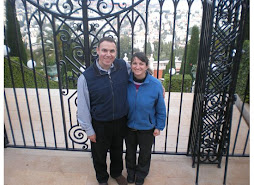After reading Reengineering the Corporation by the late Michael Hammer in 1994, I was so enamored with his “clean slate” approach to business practices that I became determined to explore how its teachings could change the nonprofit world. I wrote several papers in graduate school about how communal organizations could utilize reengineering principles in their businesses. I even attended a seminar offered by Hammer & Company to learn how I could bring reengineering concepts to the organized Jewish community.
But 15 years later, I find myself thinking about the nonprofit world very differently and am also rediscovering that there is enormous value in “old school” thinking. Of course, every nonprofit executive must run their organization as if it were a business (especially in terms of quantifying goals and accountability). However, past operating practices may also be incredibly relevant as nonprofits adapt to new economic and social realities.
I offer two specific observations:
Bring Back the Volunteers. As many not-for-profit enterprises became more sophisticated over the past two decades, they shrunk their volunteer leadership ranks. Large community boards were replaced by smaller governing boards; committees that once focused on operations were reduced or even eliminated. Most dramatically, decision-making power shifted away from the lay leadership and to the professional staff.
This drive to professionalize nonprofits brought many positive changes, but it also reduced the number of people who felt connected and committed to these organizations. What is therefore needed is 21st century approaches to engage larger numbers lay leaders. While every nonprofit is unique, ideas include advisory committees examining new uses of technology; planning groups charged with conceiving “green” initiatives; or lay-professional teams working to bring novel demonstration projects to life. Volunteers are not only vital to the vibrancy of nonprofits, but also uphold a modified teaching from the movie Field of Dreams: “build it together, and they will come.”
Bring Back the Smaller Donors. A common trend among many philanthropic organizations is that they are raising more money from a smaller donorbase than in the past. From a bottom-line perspective, the news may seem fine, but there are also negative consequences. In today’s challenging economy, a top heavy donorbase translates into big problems when major donors need to reduce their gifts. Beyond the financial challenges, having fewer donors also indicates that less people feel connected to the important community-building organizations.
Fundraising appeals are often effective barometers in measuring how nonprofits relate to a given community. They allow hundreds, if not thousands, of individuals to feel that they are making a difference to causes that are important to them. Furthermore, every gift made to a nonprofit is in essence a vote of confidence. Today’s nonprofits would therefore be wise to energize their broader fundraising efforts, especially because their annual campaigns are also “campaigning” to secure those all-important philanthropic votes.
Reflecting further on these observations, “old school” to me is not about turning back the clock to 1984, but rather, it is about ensuring that modern nonprofits have the social capital needed to succeed in 2009 and beyond. Viewed in this context, what I am really suggesting is a hybrid approach.
In the automotive world, hybrids are likely key to revitalizing their industry; perhaps the same is true for many not-for-profit organizations as they map out their future paths.

No comments:
Post a Comment